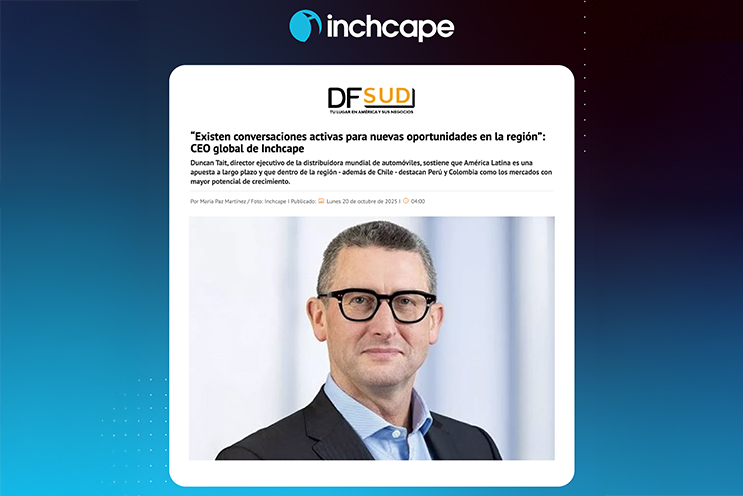
- The executive assured that the company seeks to expand into northern South America and double its size by 2030, while promoting the transition to new energy vehicles.
Latin America has become a strategic driver for British automotive distributor Inchcape. For its global CEO, Duncan Tait, the region is even a benchmark: “The way that business operates is how I would like all our businesses around the world to operate,” he said.
Currently, the region contributes 46% of the firm's adjusted pre-tax profit and accounts for 35% of global revenue in the first half of 2025.
In this regard, the executive highlighted the growth recorded by the operation over the last nine years. In 2016, regional revenue was around US$200 million, and this year it is estimated to reach US$4 billion.
Among the countries where Inchcape has a presence, Chile remains the most important market, with a 25% share. However, the company is also strongly committed to Peru, which, according to the CEO, is positioned at almost the same level as its neighbour.
Within the Andean region, Colombia is another key economy with great potential for expansion, as is Ecuador.
“I see no reason why Ecuador and its team cannot continue to grow and achieve even higher market shares than they currently have,” he said.
In this scenario, the company plans to expand into northern South America, where the executive confirmed that “there are active discussions for new opportunities”.
The big ambition for 2030: to grow
Although the business in Latin America (covering 14 countries, not including Mexico or Brazil) is already significantly consolidated, Inchcape has ambitious goals for the future.
“My aspiration is for us to double the size of the company in the coming years,” said Tait.
How would they achieve this? The executive explained that globally, the automotive industry sells around 90 million vehicles per year. Of that total, Inchcape participates in a target market of 10.8 million units.
Its goal is to reach 10% of that figure by 2030, which would mean tripling the current size of the company worldwide.
However, considering only the Americas division, where they have a portfolio of more than 40 brands, including Porsche and Subaru, the sales percentage is already at 10%. Therefore, Tait joked, “We might think that team is ready to take a break for 10 years”.
But he clarified: “I don't want that to be the case. Rather, I believe they still have a lot of room to grow, and that could mean doubling the size of that division over the next decade”.
He added: “There are still more contracts to be won and more room to increase our market share”.
Growth, he emphasised, must combine new agreements with organic strengthening and increased acquisition activity within the region.
“In an increasingly competitive world, independent distributors will want to be part of Inchcape in order to thrive in the long term, which will drive our acquisition and merger agenda,” he said.
“New energy is unstoppable”
A recent study conducted by the company revealed that 73% of people in Latin America have a positive view of electric vehicles; however, only a third are considering buying one the next time they purchase a car.
According to Tait, this shows that although “the transition to new energy vehicles is absolutely unstoppable”, mass adoption is not progressing as quickly as expected.
In his view, the pace depends on factors such as government regulation, incentives, infrastructure and the availability of distributors with a solid portfolio.
And all of this has its particularities in each market.
Even so, the executive highlighted notable progress in some countries. For example, he said that Chile leads the region with the largest market share in new energy vehicles, accounting for 44%.
It is followed by Bolivia, which has by far the highest penetration of this type of vehicle at 73%, and also Colombia, Peru and Costa Rica to a lesser extent.
“The transition will continue to move forward, but at different rates,” Tait concluded.

